
Fundamentals
In the gentle, thoughtful world of Roothea, understanding your hair begins with recognizing its inherent qualities, much like appreciating the unique spirit within each person. The notion of Textured Hair Charge, at its most fundamental, speaks to the subtle, yet profound, energetic and molecular interactions constantly at play within and around our coils, curls, and waves. This is the hair’s fundamental presence, its natural inclination, and its interaction with the environment. It encompasses the subtle electrical forces that shape how strands behave, alongside the cultural weight and vibrancy textured hair carries.
Imagine your hair as a living, breathing entity, constantly exchanging whispers with the air, the products you apply, and even the touch of your hands. At a very basic level, hair possesses a natural electrical charge. When hair is healthy, its outermost layer, the Cuticle, lies smooth and flat, giving it a soft sheen.
However, various factors can cause the cuticle to lift, exposing the inner layers and leading to a more negatively charged surface. This alteration in charge is a key aspect of the hair’s energetic presence, influencing everything from how easily it detangles to how well it retains moisture.
The Textured Hair Charge represents the inherent energetic and molecular dynamics of coils, curls, and waves, alongside their deep cultural resonance.
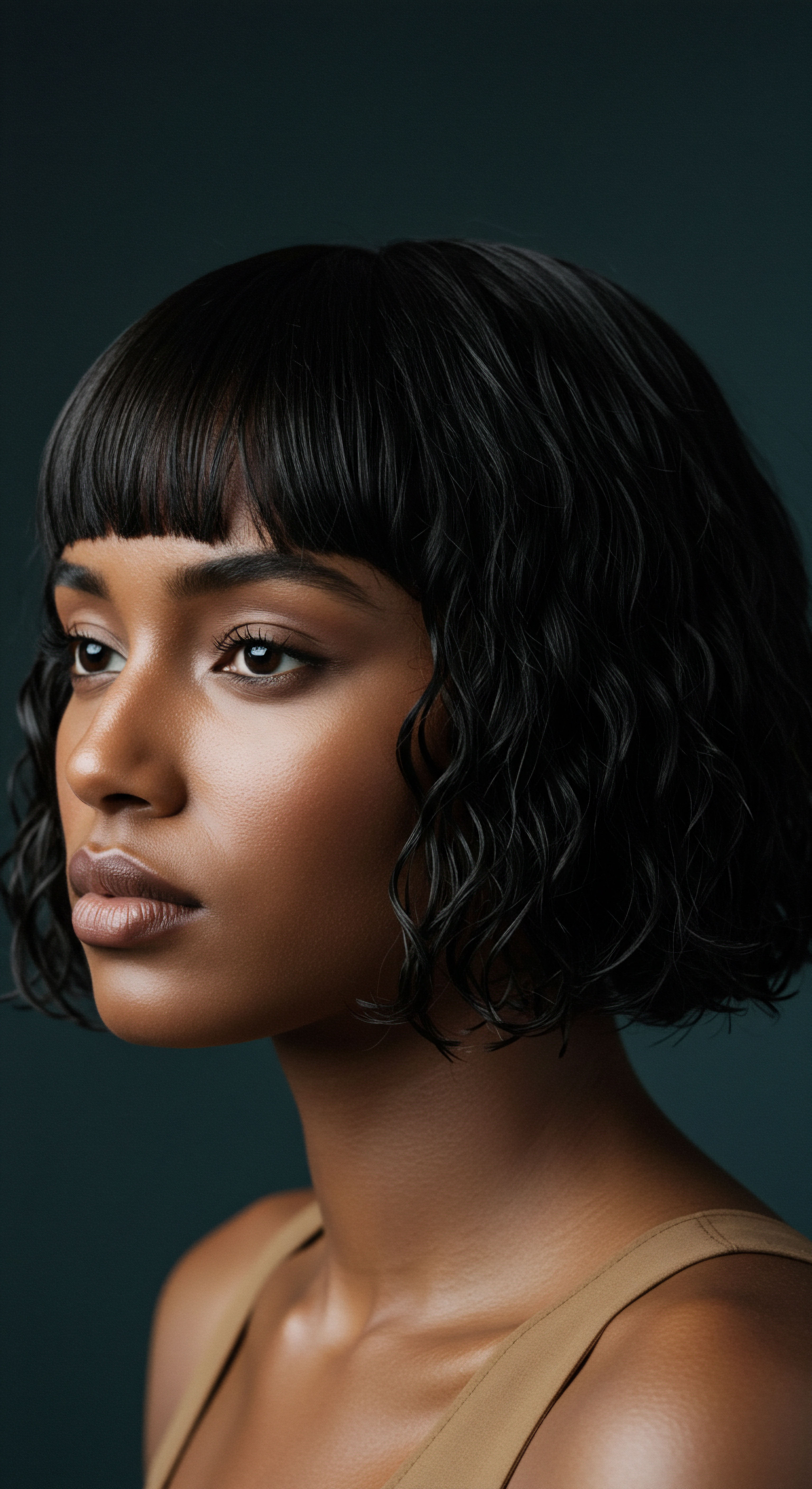
Initial Scientific Interpretations
From a scientific standpoint, the hair fiber, particularly the cuticle, generally carries a slight negative charge, especially when it has experienced some degree of damage. This negative charge becomes more pronounced when the hair is wet or has been exposed to alkaline products, which cause the cuticle scales to lift. Think of it as tiny, protective shingles on a roof; when they are raised, the underlying structure is more exposed. This exposure affects how water molecules interact with the hair and how products adhere to its surface.
- Cuticle Integrity ❉ A smooth, intact cuticle minimizes the negative charge, promoting a sleek appearance and better moisture retention.
- Environmental Interactions ❉ Humidity or dry air can influence the hair’s charge, affecting its tendency towards frizz or static. In dry environments, water is unable to dissipate excess negative charges, causing hairs to repel each other and leading to frizz and flyaways.
- Product Adhesion ❉ Positively charged ingredients, often found in conditioners, are drawn to the negatively charged areas of hair, helping to smooth the cuticle and reduce static electricity.
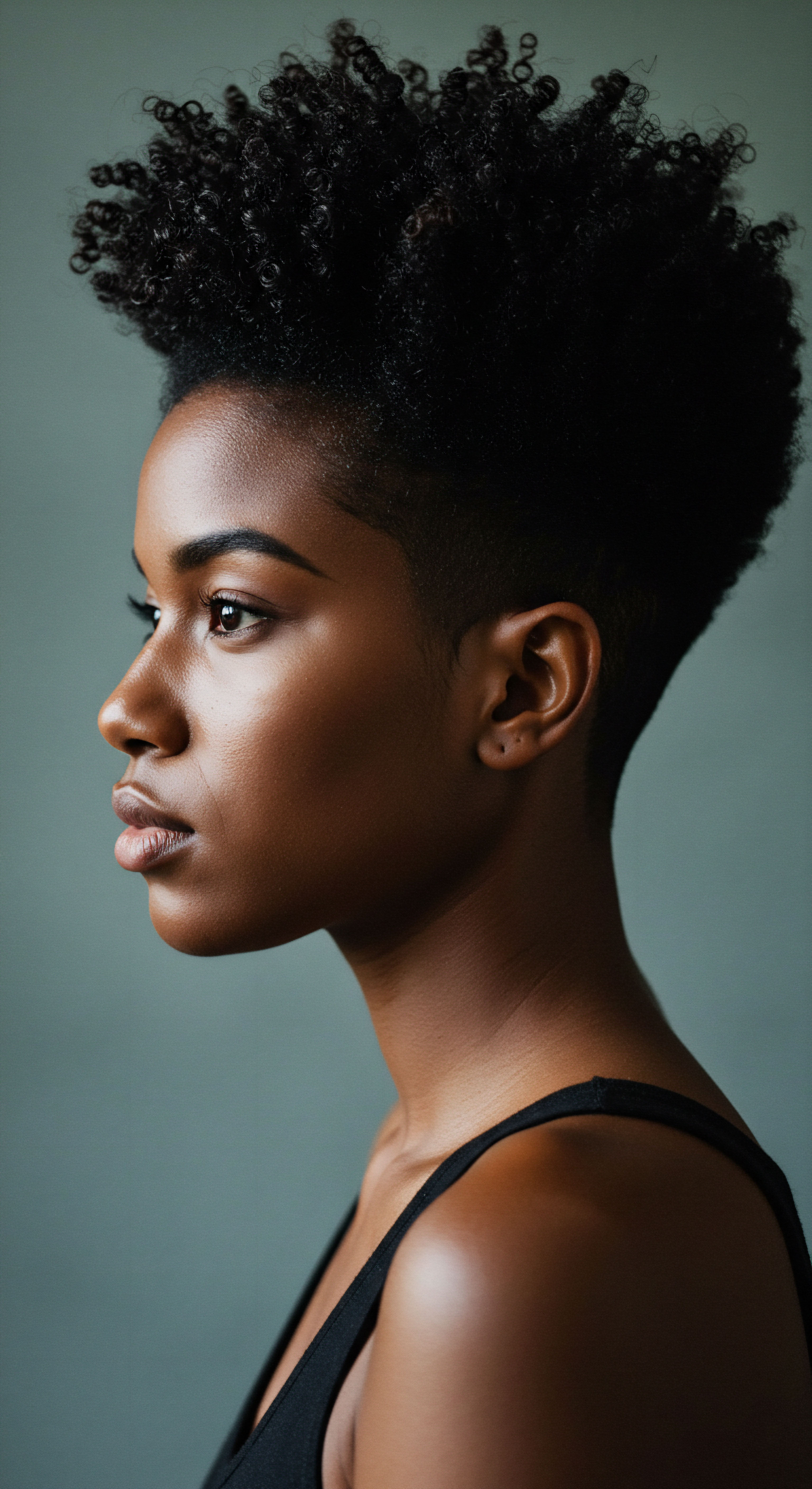
Cultural Echoes of Charge
Beyond its biophysical attributes, the Textured Hair Charge also encompasses the profound cultural and historical significance held by textured hair, particularly within Black and mixed-race communities. This aspect of the “charge” is less about electrons and more about the vibrant energy, the stories, and the enduring spirit carried within each strand. Hair has served as a powerful symbol of identity, status, spirituality, and resistance across African cultures for centuries. The meticulous care and styling of hair were communal activities, strengthening bonds and preserving cultural practices.
During periods of immense hardship, such as enslavement, hair became a silent act of defiance and a means of cultural preservation. Enslaved individuals often hid seeds or even maps within their braids, transforming hairstyles into tools of survival and communication. This deep connection to heritage imbues textured hair with an enduring cultural charge, a living archive of resilience and identity that continues to inspire and inform modern hair care rituals.

Intermediate
Moving beyond the foundational understanding, the Textured Hair Charge reveals itself as a dynamic interplay of inherent biological properties and deeply embedded cultural narratives. Here, we consider how the hair’s molecular architecture, coupled with its historical journey, shapes its daily existence and informs our approach to care. This layer of comprehension asks us to look closely at the distinct needs of textured hair, recognizing that its unique structure demands a thoughtful, informed relationship with products and practices.
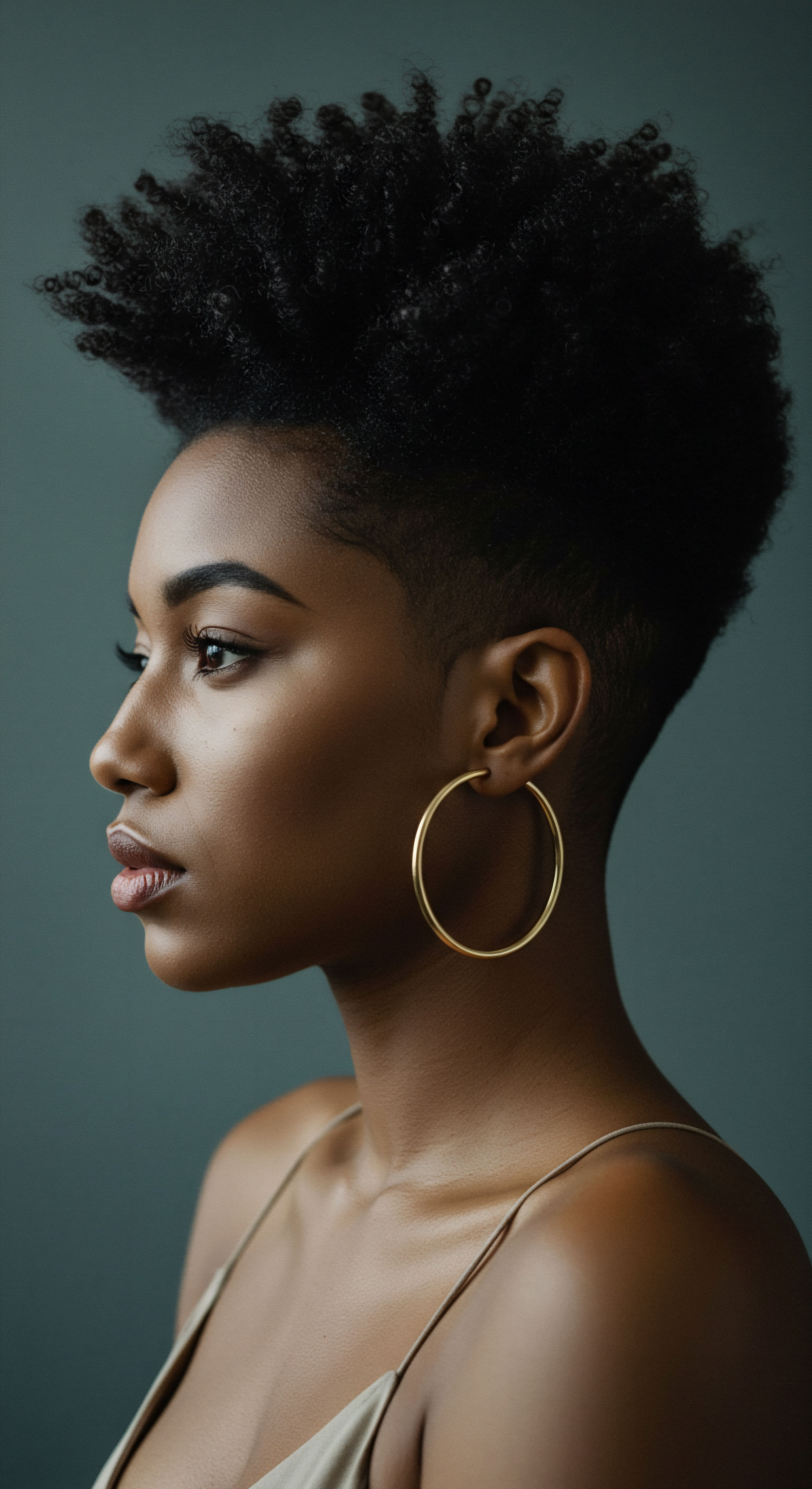
The Biophysical Landscape of Textured Hair
Textured hair, especially Afro-type hair, exhibits distinct biological and physical properties compared to other hair types. The intricate helical structure of coiled hair means there are more points of contact between strands, increasing the potential for tangling and breakage. This structural uniqueness contributes to a higher susceptibility to moisture loss, despite having a notable lipid content.
Studies indicate that Afro-textured hair possesses the highest overall lipid content, estimated to be 2.5 to 3.2 times higher than European and Asian hair, respectively, with a particularly high internal lipid content. However, this abundance of lipids does not always translate to optimal moisture retention due to the hair’s characteristic curves and twists, which create areas of weakness and pathways for moisture to escape.
Textured hair’s unique structure, despite its rich lipid content, often presents distinct challenges in moisture retention and susceptibility to external stressors.
The hair’s natural negative charge, often amplified by damage or chemical treatments, influences how it interacts with water and hair care formulations. Cleansing agents, known as Anionic Surfactants, carry a negative charge that helps lift dirt and oils, simultaneously causing the hair cuticle to slightly raise. This lifting action, while necessary for cleansing, can also leave the hair more vulnerable if not properly re-sealed.
Conditioning agents, conversely, are typically Cationic Surfactants, possessing a positive charge that attracts them to the negatively charged hair, helping to smooth the cuticle and impart softness and hydration. Understanding this molecular dance is crucial for selecting products that genuinely support the hair’s health rather than inadvertently causing further disruption.
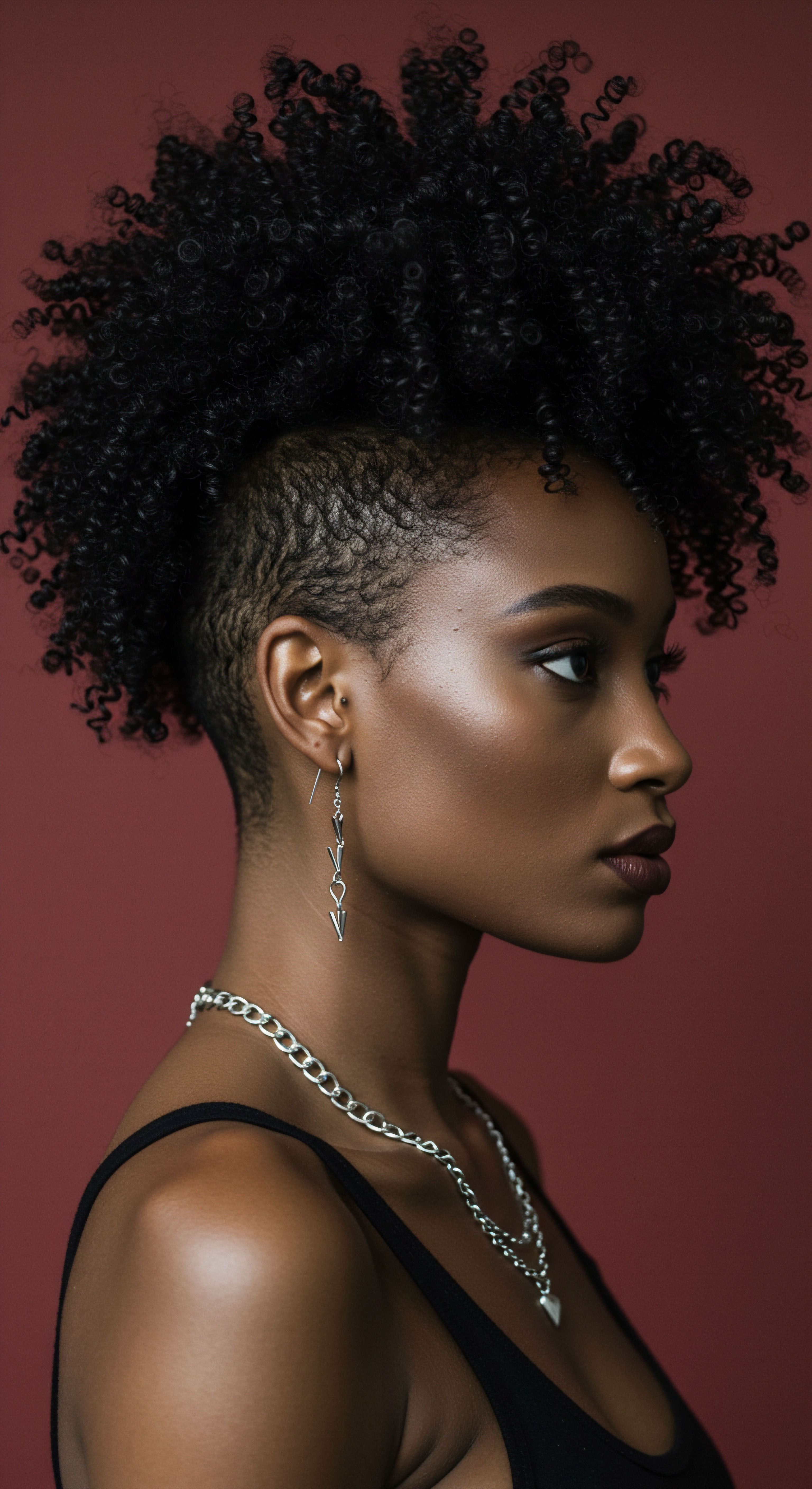
Daily Rituals and the Hair’s Response
The Textured Hair Charge manifests in the everyday rituals of care. For instance, the phenomenon of Hygral Fatigue, where hair experiences damage from repeated swelling and contraction due to water absorption and desorption, is particularly relevant for highly porous textured hair. When the cuticle is compromised, the hair’s water-repelling barrier is disrupted, making it more susceptible to water damage during washing. This highlights the importance of thoughtful washing practices, protective styling, and moisture-sealing techniques to maintain the hair’s structural integrity and mitigate the effects of environmental fluctuations.
Consider the common practice of “co-washing” (conditioner-only washing) within textured hair communities. This approach often stems from an intuitive understanding of the hair’s moisture needs and its inherent charge. By minimizing exposure to harsher cleansing surfactants, co-washing helps to preserve the delicate lipid barrier and maintain the cuticle’s smoother state, thereby supporting the hair’s natural moisture balance.
| Characteristic Helical Structure |
| Description Tightly coiled or curved hair strands. |
| Impact on Care Increased propensity for tangling and breakage; requires gentle handling. |
| Characteristic Lipid Content |
| Description Highest overall lipid content among hair types. |
| Impact on Care Provides a protective barrier, but structure can lead to moisture loss. |
| Characteristic Cuticle Behavior |
| Description Prone to lifting, increasing negative charge and vulnerability. |
| Impact on Care Requires positively charged conditioners for smoothing and sealing. |
| Characteristic Moisture Retention |
| Description Challenges in retaining moisture due to structural characteristics. |
| Impact on Care Emphasizes the need for consistent hydration and sealing practices. |

Cultural Expression and Societal Perceptions
The Textured Hair Charge extends into the social realm, reflecting how textured hair has been perceived and celebrated—or, at times, policed—throughout history. Hairstyles like braids, cornrows, locs, and Afros are not merely aesthetic choices; they are expressions of cultural identity and historical continuity for people of African descent. These styles have been passed down through generations, serving as powerful symbols of heritage, community, and resistance against Eurocentric beauty standards.
However, this vibrant expression has often been met with societal pressure and discrimination. The historical context of “good hair” versus “bad hair” and the push for straightened textures to achieve social and economic acceptance speak to a deeply ingrained bias. This societal charge, a burden of expectation and judgment, continues to influence personal choices and collective experiences within the textured hair community.
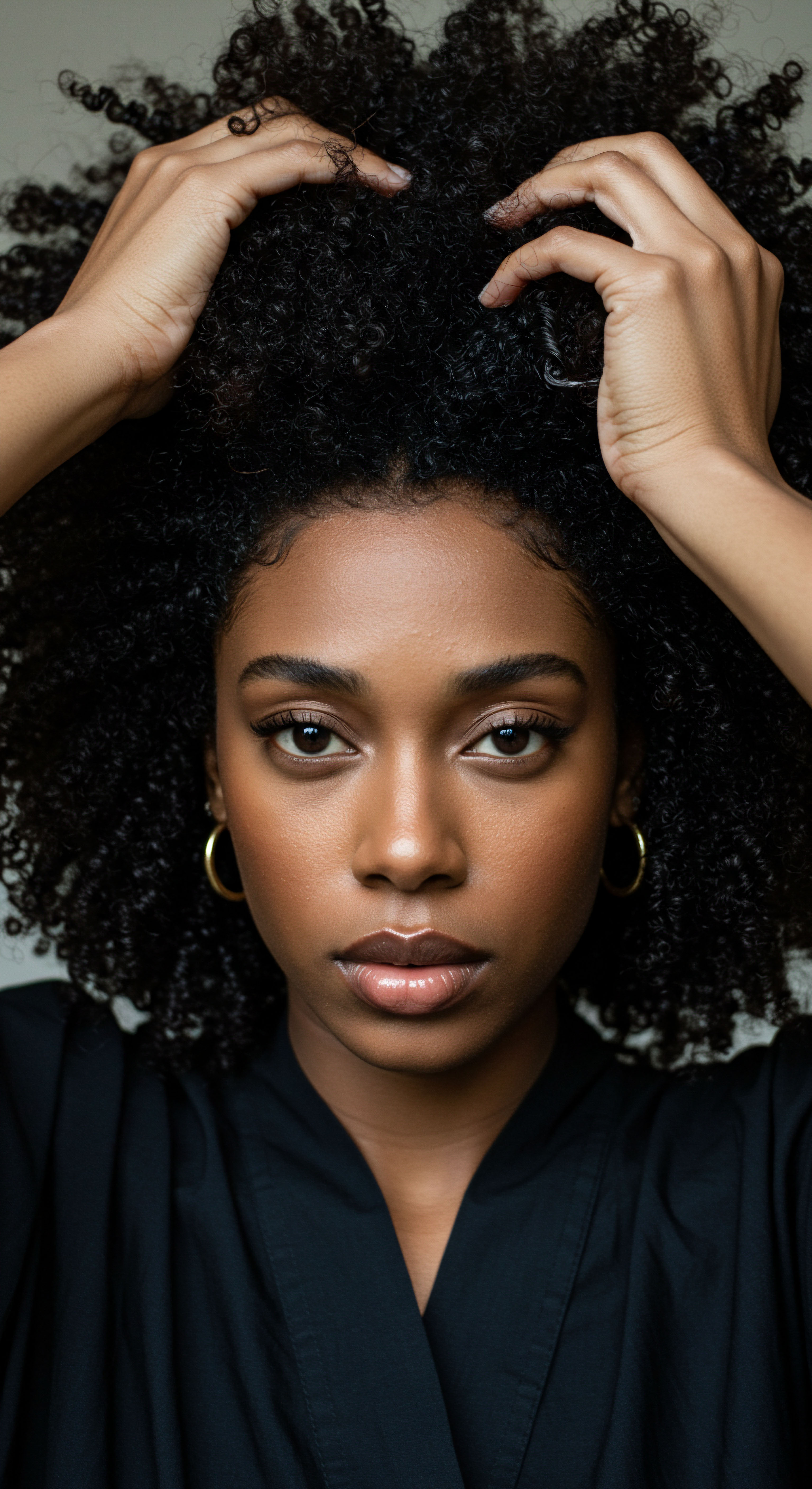
Advanced
At its most sophisticated interpretation, the Textured Hair Charge represents a complex, multi-dimensional phenomenon, integrating its intrinsic biophysical properties with its profound psychosocial, economic, and historical significance. This conceptualization moves beyond surface-level understanding to examine the intricate interplay of molecular forces, cultural legacy, and systemic influences that shape the lived experience of textured hair, particularly for individuals of Black and mixed heritage. It is a declaration of the hair’s inherent energetic state and its enduring, often contested, presence within broader societal structures.
The precise meaning of Textured Hair Charge, from an advanced perspective, delineates the cumulative energetic potential, both physical and metaphorical, residing within hair characterized by its unique coiling, curling, and waving patterns. This includes the electrokinetic properties of the hair fiber, its unique structural lipid profile, and the collective socio-cultural capital and historical burdens it carries. It is an explication of the hair’s molecular disposition, its historical journey through oppression and reclamation, and its contemporary role as a site of identity, resistance, and economic influence.
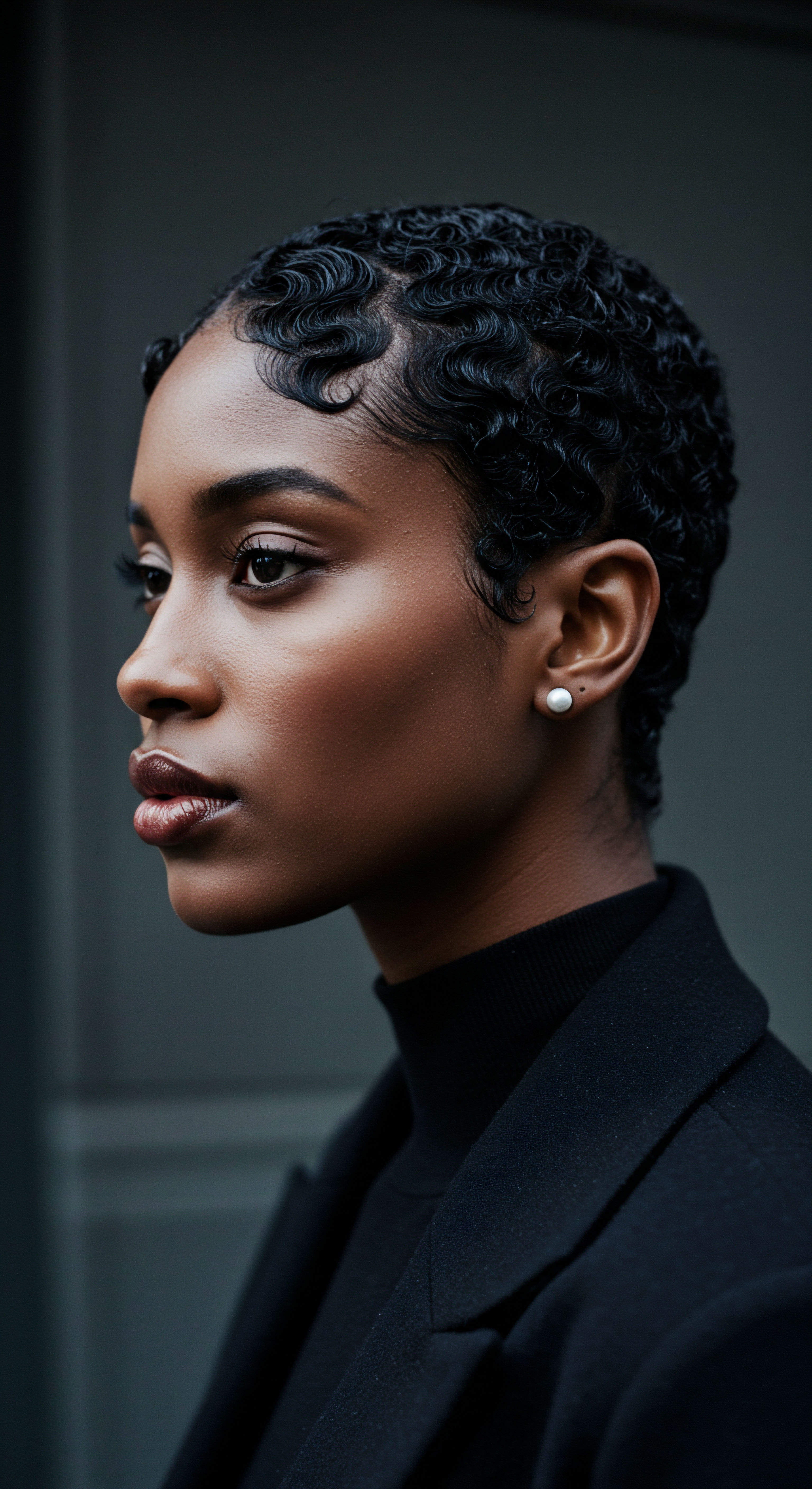
The Biophysical Complexities of Hair Charge
Delving deeper into the biophysical aspects, the inherent negative charge of hair stems primarily from the carboxyl groups of its amino acid residues, particularly keratin proteins, which are exposed on the hair’s surface. This charge is intensified in textured hair due to its unique morphological characteristics, such as elliptical cross-sections and varying degrees of curl helicity, which lead to more exposed surface area and potentially more opportunities for friction and cuticle lifting. When the cuticle is raised, as often occurs with mechanical manipulation, heat, or chemical processes, the underlying cortex becomes more susceptible to environmental stressors and loss of internal moisture. This vulnerability can lead to increased frizz, diminished shine, and a greater propensity for breakage.
The lipid composition of textured hair plays a critical role in its charge and overall health. Afro-textured hair, notably, has a higher total lipid content, particularly apolar lipids, which contribute to its barrier function. However, the distribution of these lipids and the hair’s unique structural geometry can still lead to challenges in moisture retention. This is not a contradiction, but rather a testament to the complex nature of textured hair; while rich in protective lipids, its coiled structure can make it difficult for natural oils to travel down the hair shaft, leaving ends vulnerable to dryness.
Consider the science behind product formulation. The efficacy of cationic conditioning agents, with their positive charge, lies in their electrostatic attraction to the negatively charged, often damaged, areas of the hair fiber. This targeted interaction helps to neutralize the charge, smooth the cuticle, and reduce static, thereby improving manageability and appearance. The precise application of these agents is an art informed by an understanding of the hair’s electrochemistry, aiming to restore a balanced charge state without overburdening the strands.
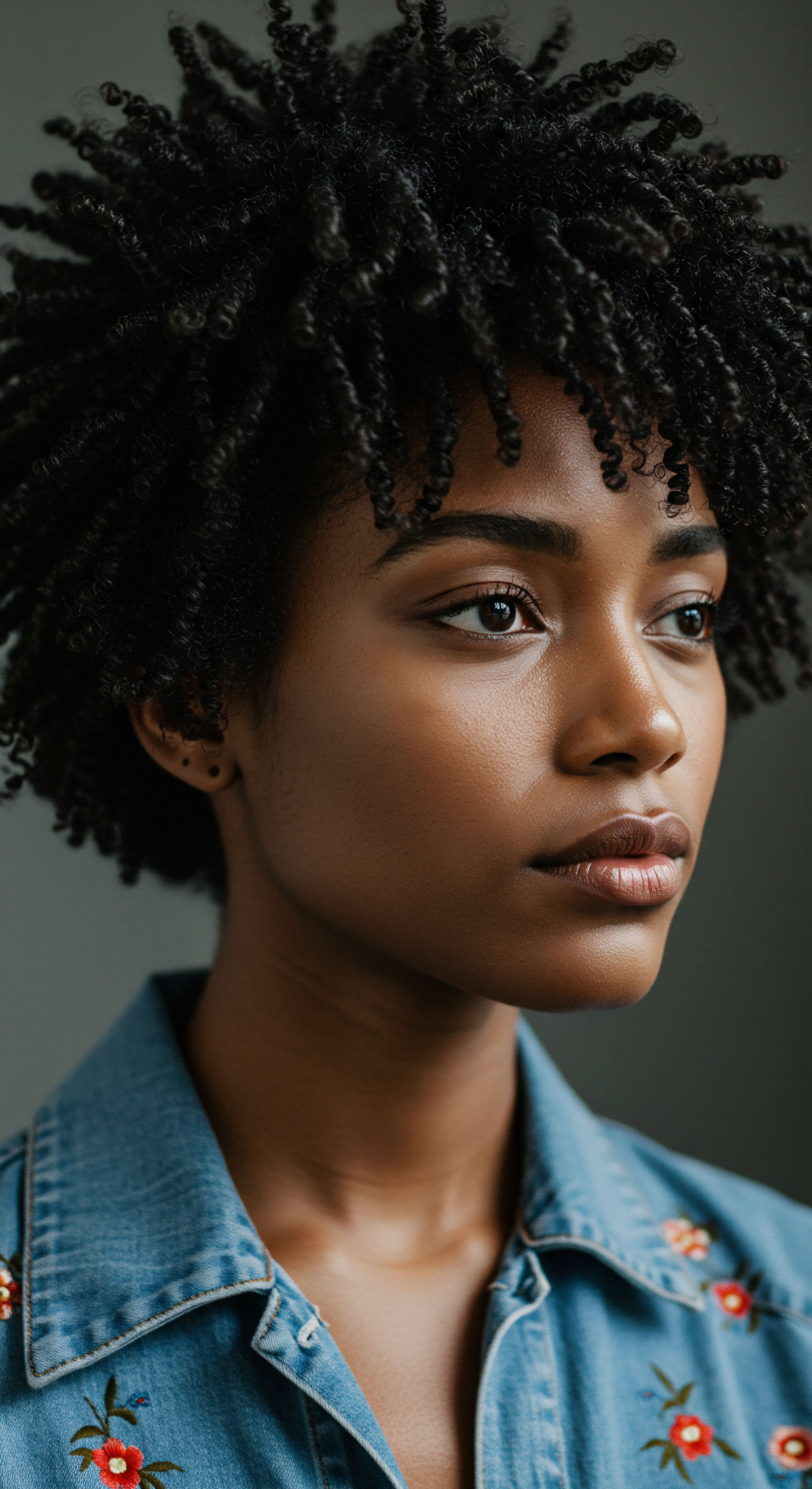
Socio-Cultural and Economic Dimensions of the Charge
The Textured Hair Charge extends significantly into the societal and economic realms, representing the enduring burden and profound value associated with textured hair, particularly for Black and mixed-race individuals. This is a historical and contemporary phenomenon where hair serves as a visible marker of identity, often subjected to Eurocentric beauty standards and systemic discrimination.
Historically, policies like the Tignon Laws in 18th-century New Orleans mandated that free Creole women of color cover their elaborate hairstyles, an attempt to signify their social standing and control their autonomy. This legislative effort highlights an early recognition of the power and symbolism inherent in Black hair, and a desire to suppress its expressive charge. The “Black Is Beautiful” movement of the 1960s, with the widespread adoption of the Afro, directly challenged these oppressive norms, transforming natural hair into a powerful political statement and a symbol of pride and resistance. Angela Davis’s Afro, prominently displayed on her “Wanted” ad, became an iconic symbol of Black power and defiance.
In contemporary society, the charge manifests as ongoing discrimination and microaggressions. A significant study commissioned by Dove and LinkedIn in 2023, as part of their CROWN Workplace Research Study, revealed a stark reality ❉ Black Women’s Hair is 2.5 Times More Likely to Be Perceived as “unprofessional” Than White Women’s Hair. This research also found that approximately two-thirds (66%) of Black women change their hair for a job interview, with 41% altering their hair from curly to straight, and over 20% of Black women aged 25-34 have been sent home from work because of their hair. This data underscores a pervasive systemic issue where individuals are compelled to alter their natural appearance to conform to biased standards, impacting career progression and mental well-being. The economic implication is substantial, as Black women spend considerable time and resources to manage and style their hair, often to navigate these discriminatory landscapes.
Black women often navigate a societal burden, with studies showing their natural hair is significantly more likely to be deemed “unprofessional,” leading to altered hairstyles for job interviews and workplace microaggressions.
The economic impact extends beyond individual spending. The textured hair care market represents a significant segment of the beauty industry, driven by specific product needs and cultural practices. This market’s growth, however, also reflects the historical underservice and misrepresentation of textured hair in mainstream beauty.
Businesses and brands that genuinely understand and cater to the nuanced needs of textured hair, acknowledging its scientific particularities and cultural significance, are the ones that truly connect with consumers. This demands a departure from generic solutions, instead embracing formulations that respect the hair’s unique charge and address issues like moisture balance, structural integrity, and scalp health, which are paramount for textured hair types.
The ongoing advocacy for the CROWN Act (Creating a Respectful and Open World for Natural Hair) across various states and at the federal level is a direct response to this societal charge. This legislation aims to prohibit discrimination based on hair texture and protective styles, acknowledging that such discrimination is a form of racial bias. Its passage in numerous states signifies a collective recognition of the need to dismantle systemic barriers and affirm the right to cultural expression through hair, alleviating a long-standing burden on Black and brown communities. The success of the CROWN Act represents a tangible shift in the societal aspect of the Textured Hair Charge, moving towards greater equity and acceptance.
From an advanced perspective, the Textured Hair Charge is a call to action for industries, institutions, and individuals to acknowledge, respect, and celebrate the full spectrum of textured hair. It compels us to move beyond superficial understanding to a place of deep appreciation for its biological intricacies, its historical narratives, and its contemporary significance as a symbol of identity, resilience, and economic power. This comprehensive interpretation offers pathways for innovation in hair science, culturally attuned care practices, and equitable societal norms, truly allowing the inherent vibrancy of textured hair to shine without compromise.

Reflection
As we contemplate the many facets of the Textured Hair Charge, a profound understanding begins to settle within us. It is more than a mere concept; it is a living truth, pulsating with the vitality of heritage, the resilience of history, and the intricate dance of science. Each coil, each curl, each wave holds not only the whispers of ancestral wisdom but also the delicate balance of molecular forces, constantly interacting with the world.
The journey to comprehend this charge invites us to look beyond the visible, to appreciate the unseen energies that shape our hair’s character and our personal connection to it. It encourages a mindful approach to care, one that honors both the scientific needs of the hair fiber and the cultural stories it embodies. In this deeper appreciation, we discover not just how to care for textured hair, but how to celebrate its profound place in our identities and in the broader human story.
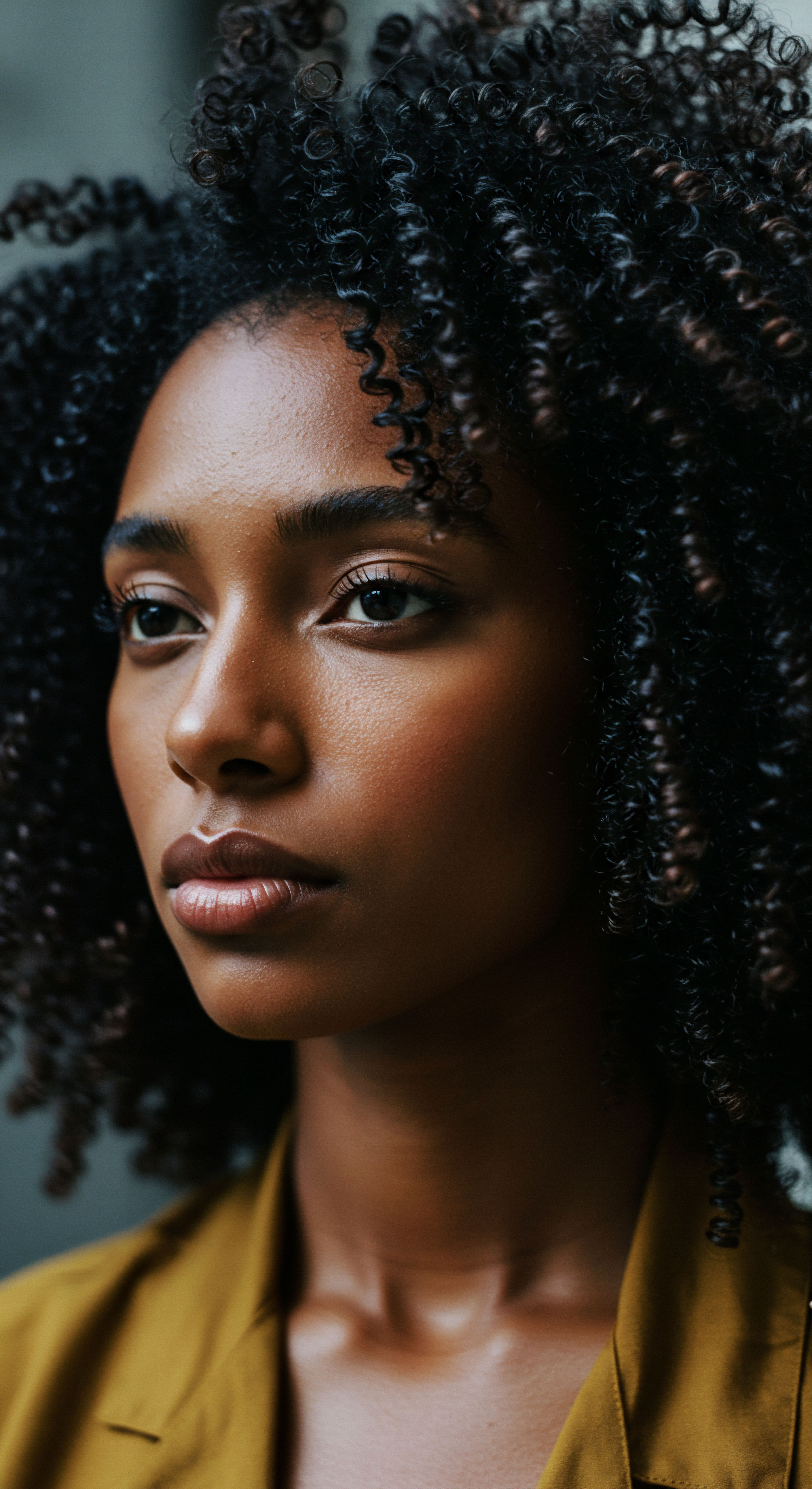
References
- Csuka, D. (2022). A systematic review on the lipid composition of human hair. International Journal of Dermatology, 61(7), 804-811.
- Donahoo, M. & Smith, K. (2019). New York City Human Rights Law ❉ Legal Enforcement Guidance on Race Discrimination on the Basis of Hair. New York City Commission on Human Rights.
- Essien, A. M. & Wood, J. M. (2020). Race-based Microaggressions Experienced by Black Girls In Relation to Their Hair. Everyday Musicality.
- Koval, C. Z. & Rosette, A. S. (2020). The Natural Hair Bias in Job Recruitment. Social Psychological and Personality Science, 11(6), 765-773.
- Maharaj, C. (2025). Beyond the roots ❉ exploring the link between black hair and mental health. Mental Health Awareness Week Blog, TRIYBE.
- Mbilishaka, A. M. (2023). The Politics of Black Hair. Psychology Today.
- Mbilishaka, A. M. & Apugo, D. (2024). Don’t Get It Twisted ❉ Untangling the Psychology of Hair Discrimination Within Black Communities. American Journal of Orthopsychiatry.
- NAACP Legal Defense Fund. (n.d.). Hair Discrimination FAQ.
- Patton, T. O. (2010). Hey Girl, Am I More Than My Hair? ❉ African American Women and Their Struggles with Beauty, Body Image, and Hair. The Journal of Black Studies, 40(4), 525-542.
- Reid, A. (2023). The Person Beneath the Hair ❉ Hair Discrimination, Health, and Well-Being. Health Promotion Practice, 24(5), 651-654.
- Robinson, A. (2023). The CROWN Act ❉ A jewel for combating racial discrimination in the workplace and classroom. Economic Policy Institute.
- Walker, R. (2023). What Every Dermatologist Must Know About the History of Black Hair. Journal of Drugs in Dermatology, 22(11), 1083-1087.